Homemade Nail Fungus Cream
Numerous fungi are found all over our body, but they usually go unnoticed. However, sometimes they are able to penetrate below the skin via a cut or abrasion, and then subsequently flourish in the warm, moist conditions our body provides them. Fungal infections are a common problem on the hands, feet, and nails which can be treated at home with a few simple ingredients.
How To Treat Nail Fungus
It’s important to understand the severity as well as what part of the nail is infected in order to treat it effectively. Skin and cuticle infections such as athletes’ foot are usually contained to the surface of the skin, so in these situations, a topical treatment is recommended. If left untreated, many skin and cuticle infections can lead to an infected nail as the fungus grows underneath the cuticle and penetrates the nail bed. Therefore, topical treatments are unlikely to be as effective as an oral treatment in these situations.
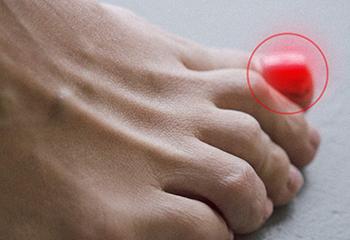 When treating most fungal infections, avoid using water-based moisturizers and lotions, since this trapped moisture can exacerbate the condition.
When treating most fungal infections, avoid using water-based moisturizers and lotions, since this trapped moisture can exacerbate the condition.
The length of treatment is usually over an extended period of time, especially if the fungus has grown underneath the nail and into the nail bed. Even when it looks like the infection has cleared, it’s crucial to continue the treatment for at least another two months to allow the nail to grow out and to reduce the risk of a flare-up. In some instances, this may take up to a year for the nail to completely grow out and heal.
Types Of Nail And Foot Fungi
There are a number of species of fungi that cause athletes’ foot and nail infections, the most common being Trichophyton rubrum and Trichophyton mentagrophytes.
Other fungi that can infect the nail and nail bed include Aspergillus terreus, Acremonium roseogriseum, Epidermophyton floccosum, Microsporum gypseum, Fusarium oxysporum as well as other species of Trichophyton.
Secondary infections from bacteria such as Staphylococcus aureus are common if infected nails are left untreated. This secondary infection can cause ingrown nails.
Plants That Treat Nail Fungus
Studies have shown that the best performers against T. rubrum and T. mentagrophytes include;
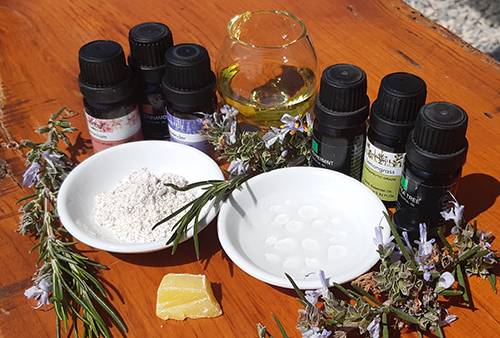
- Combining the essential oils of oregano with either cinnamon bark, cassia or cilantro causes a significant increase in their ability to inhibit both Trichophyton species as well as Microsporum
- The combination of lavender and tea tree essential oil works effectively against both Trichophyton species, but only moderately when used separately. The potency of over-the-counter anti-fungal creams can be elevated when mixed with this combination of essential oils.
- Thyme essential oil strongly inhibits a wide range of fungi including both Trichophyton species and Microsporum
- Rosemary, Lemongrass, tea tree, mint, and geranium essential oil all performed relatively well against fungi that cause nail infections.
- Arrowroot has anti-fungal and anti-bacterial properties and also helps to keep your feet dry.
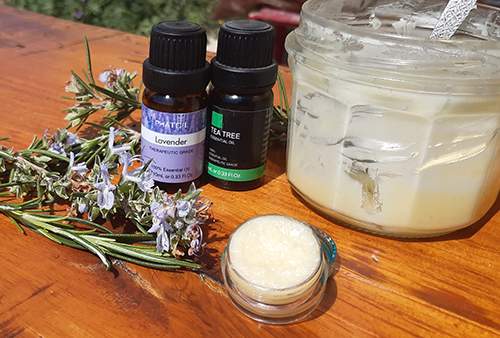
- Emperors’ candles (Senna alata) and Deadly nightshade (Solanum nigrum) extracts also perform well against these two species of fungi and terreus. Man-to-man (Peperomia pellucida) leaf extracts inhibit T. Mentagrophytes. If you have access to any of these medicinal plants, then you can infuse them in olive oil to add to this nail fungus cream at a 1:10 concentration.
Plant-Based Oils Which Increase Skin Penetration
To ensure a successful homemade nail fungus treatment, it’s also important to consider how to maximize the skin’s absorption so that the cream is delivered deeper into the skin; to the dermis. The kinked, fatty-acid chains found in olive oil and soybean oil were found to be the best combination for skin penetration; olive oil improves the absorption of the outer skin layers (the epidermis), while soybean oil penetrates both the epidermis as well as the dermis underneath. The straight-chained, unsaturated fatty acids found in coconut oil don’t penetrate as effectively.
A 5% concentration of eucalyptus, black cumin, peppermint, and tea tree essential oil can loosen the hydrogen bonds in your skin to increase penetration of some anti-fungal medications.
How To Make A Nail Fungus Cream
This cream is incredibly simple since it achieves a creamy texture without any water-based products (and therefore without the need of any preservatives or emulsifiers).
Ingredients
- 2 tablespoons of olive oil
- 2 tablespoons of soybean oil
- 1/3 ounce (10 g) of beeswax
- 1 teaspoon of arrowroot powder
- 30 drops of essential oil
Optional Step: Make your own infused oil: Infuse the olive and soybean oil in a double boiler with any of the plants listed above (for example, rosemary, thyme, or deadly nightshade). Keep the temperature below 100°F and let the oil infuse with the herbs for at least 3 hours (the longer the better).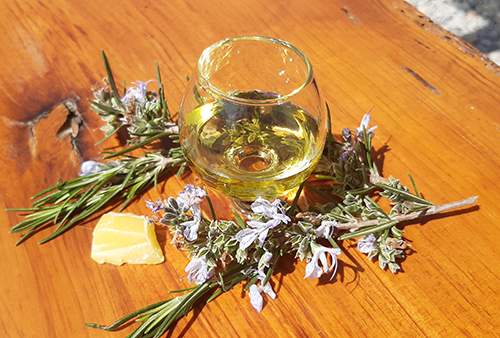
Step 1: Make A Salve.
Combine the beeswax, olive oil, and soybean oil in a double boiler (or a glass jar sitting in a pot of water on the stove as I do). Once everything is combined, remove the jar from the water, add the essential oil and allow it to start to cool.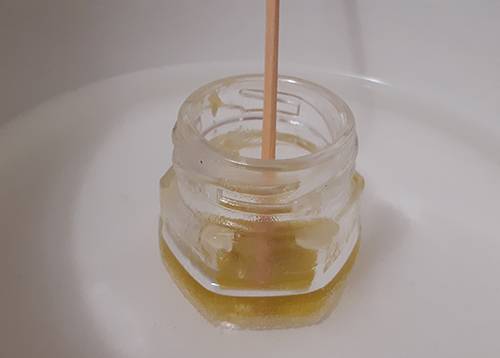
Step 2: Make The Cream
The salve in step 1 can now be made into a cream by slowly sifting the arrowroot powder into the salve. Make sure to wait until the salve is about body temperature (it will just start to get cloudy but still be warm to the touch), then mix the arrowroot powder in with a whisk or small beaters. This will take at least 3 minutes, closer to 6 minutes if you are using a hand whisk.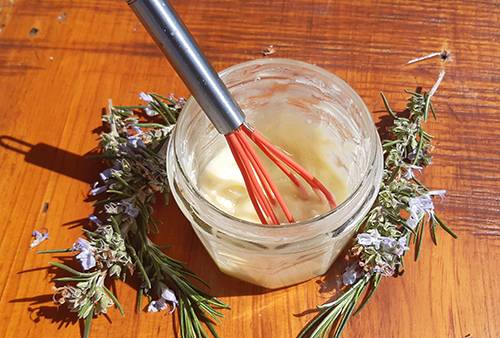
How To Apply Your Homemade Nail Fungus Cream
It’s recommended to follow a few simple steps when treating nail fungus topically;
- Wash and dry the affected nail thoroughly.
- Apply the nail fungus cream liberally and massage it in, making sure to rub it deeply into the cuticle, skin, and between the digits.
- Allow the skin and nails to dry completely again before putting on any socks or shoes.
- Repeat at least three times a day.
- For best results, store the cream in the fridge. Cold cream can help to soothe the itchiness and heat that can be produced by an infection. When stored in the fridge, this cream will keep for about a year if all your tools and jars are sterilized beforehand.
Some Other Effective Treatments For Nail Fungus Include;
- Soak the nail in a solution of 1-part vinegar to 1-part warm water for 5 – 10 minutes a day.
- Apply 1- 2 drops of one of the essential oils listed above directly to the affected nail at least twice a day.
- Garlic (Allium sativum) contains ajoene which has been found to be as effective at treating athletes’ foot as medicated products such as terbinafine. However, the sulfides in garlic can irritate the skin (and the smell can irritate the nose) and it’s especially irritating to skin that is already battling an infection, but garlic is a great option for treating nail infections orally.
- Help to keep your feet and nails dry by applying arrowroot powder directly to the skin.
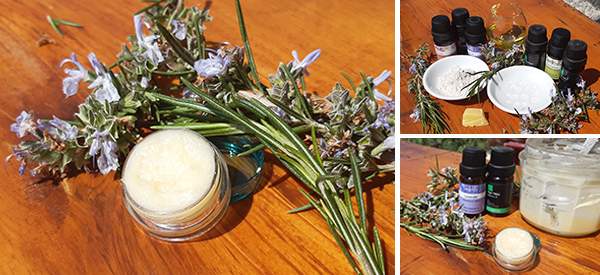
Comments
Post a Comment